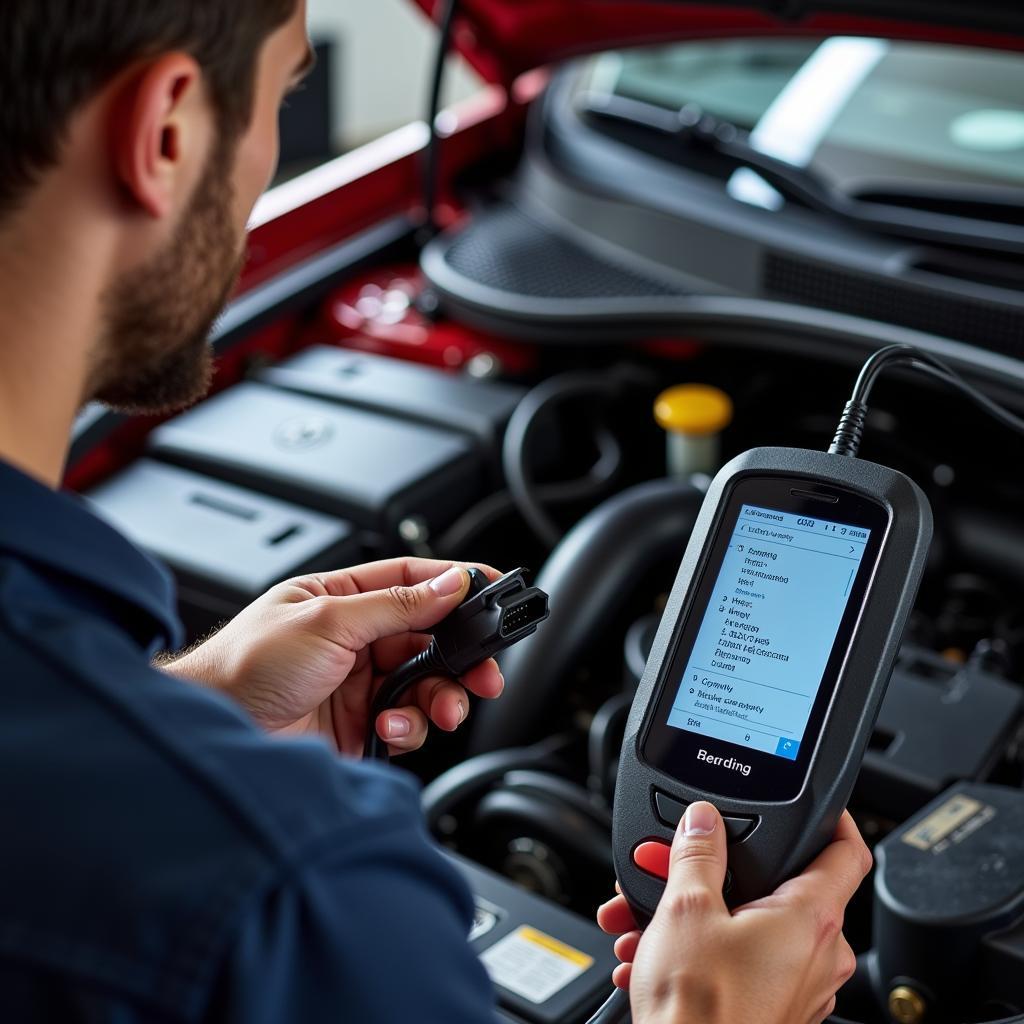Diagnosing car motor problems can feel like navigating a maze, especially with today’s complex automotive technology. But with a systematic approach and a little know-how, you can pinpoint the source of many common issues and potentially save yourself a costly trip to the mechanic. This guide will walk you through How To Diagnose Car Motor Problems effectively, covering everything from simple checks to more advanced troubleshooting techniques.
 Diagnosing Car Engine Issues: A Step-by-Step Guide
Diagnosing Car Engine Issues: A Step-by-Step Guide
Listening to Your Engine: Identifying the Symptoms
The first step in diagnosing car motor problems is to pay close attention to your vehicle. Strange noises, unusual smells, and performance changes can all be indicators of underlying engine issues. Is your engine making a knocking sound? Do you smell burning oil? Has your car lost power or fuel efficiency? Documenting these symptoms will be crucial in determining the next steps. For example, a knocking sound could indicate a problem with your bearings, while a sweet, burning smell might suggest a coolant leak. Identifying the specific symptoms you’re experiencing is like piecing together a puzzle, with each piece leading you closer to the solution.
Common Car Motor Problems and Their Causes
Understanding common car motor problems and their potential causes is essential for effective diagnosis. A misfiring engine, for example, could be caused by faulty spark plugs, worn ignition coils, or a vacuum leak. Similarly, overheating can stem from a malfunctioning thermostat, a low coolant level, or a faulty radiator fan. Knowing these connections allows you to narrow down the possibilities and focus your diagnostic efforts. Is your car struggling to start? This could be due to a failing battery, a faulty starter motor, or a problem with the fuel system. Similar to warning signs of car problems, understanding these problems is crucial.
 Common Engine Problems and Their Symptoms: A Visual Guide
Common Engine Problems and Their Symptoms: A Visual Guide
How to Perform a Basic Engine Check
Before diving into more complex diagnostics, performing a basic engine check can often reveal simple solutions. Start by checking your fluid levels, including engine oil, coolant, brake fluid, and power steering fluid. Low levels can indicate leaks or other issues. Next, inspect your belts and hoses for signs of wear and tear, such as cracks, fraying, or looseness. Finally, check your air filter and replace it if it’s dirty or clogged. These basic checks can often prevent bigger problems down the road.
Using Diagnostic Tools: OBD-II Scanners
Modern vehicles are equipped with an OBD-II port, which allows you to connect a diagnostic scanner and retrieve engine codes. These codes provide valuable insights into the specific systems experiencing problems. OBD-II scanners can be purchased online or at auto parts stores, and they can range from basic code readers to more advanced tools with live data streaming capabilities. Understanding how to use these tools effectively can greatly simplify the diagnostic process. Similar to diagnosing a nissan car window problem, using the right tool is key.
 OBD Scanner Reading Engine Codes on a Car
OBD Scanner Reading Engine Codes on a Car
When to Seek Professional Help
While many car motor problems can be diagnosed and even fixed with basic tools and knowledge, there are times when seeking professional help is necessary. If you’ve exhausted your troubleshooting efforts and are still unable to identify the source of the problem, or if the issue seems complex and requires specialized equipment, it’s best to consult a qualified mechanic. This is particularly true for problems involving internal engine components or complex electrical systems. Just like when asking if mr bill motors arlington texas do they fix car problems, knowing when to seek expert help is important.
Conclusion: Mastering Car Motor Diagnostics
Understanding how to diagnose car motor problems empowers you to take control of your vehicle’s maintenance and potentially avoid expensive repairs. By combining careful observation, basic checks, and the effective use of diagnostic tools, you can confidently identify and address many common engine issues. However, knowing when to seek professional help is equally crucial. This guide has equipped you with the foundational knowledge to begin diagnosing car motor problems, and with practice and ongoing learning, you can become more proficient at keeping your car running smoothly. For personalized assistance and expert advice, connect with us at AutoTipPro at +1 (641) 206-8880 or visit our office at 500 N St Mary’s St, San Antonio, TX 78205, United States.
 Mechanic Inspecting a Car Engine for Problems
Mechanic Inspecting a Car Engine for Problems
FAQ
-
What are the most common signs of engine trouble?
Common signs include unusual noises, strange smells, performance issues (loss of power, poor fuel efficiency), and warning lights on the dashboard. -
Can I diagnose car motor problems myself?
Yes, you can diagnose many common car motor problems using basic tools and techniques. -
What is an OBD-II scanner, and how do I use it?
An OBD-II scanner is a diagnostic tool that retrieves engine codes from your vehicle’s computer, helping you pinpoint the problem area. You simply plug it into your car’s OBD-II port and follow the instructions. -
When should I take my car to a mechanic?
If you’re unsure of the problem, if the issue seems complex, or if it involves internal engine components, it’s best to consult a qualified mechanic. This also applies when wondering about issues such as what are problems with car if it won or heater vent door problem 1997 town car. -
How can I prevent future engine problems?
Regular maintenance, including oil changes, fluid checks, and inspections, is crucial for preventing future engine issues.





Leave a Reply